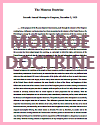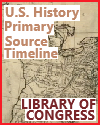Encountering a wide variety of educational experiences is crucial for high school students studying westward expansion and regional differences because it moves learning beyond a simplistic, monolithic narrative. Traditionally, this era was often presented as a triumphant, inevitable march of progress.
A multifaceted approach, however, reveals a far more complex and truthful picture. By analyzing primary sources like settlers' diaries, Native American accounts, political cartoons, and economic data, students develop critical thinking skills. They learn to evaluate conflicting perspectives and understand that history is an interpretation, not just a collection of facts.
This diversity of sources is essential for grappling with the profound consequences of this period. Students can better understand how regional economic differences—the industrial North versus the agrarian, slave-based South—were exacerbated by westward expansion, directly leading to sectional crises.
Furthermore, incorporating the viewpoints of displaced Native American tribes, Mexican residents in annexed territories, and diverse groups of pioneers provides a more honest and inclusive history. It fosters empathy and a deeper appreciation for the nation's complex origins, moving beyond celebration to a thoughtful examination of conflict, adaptation, and legacy.
Ultimately, this approach equips students not only with historical knowledge but also with the analytical tools necessary for engaged and responsible citizenship.
|












